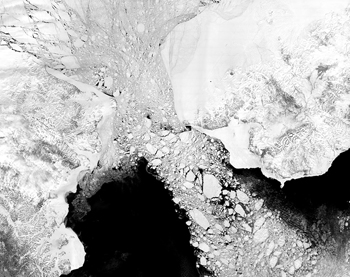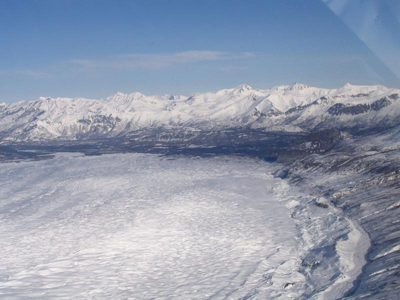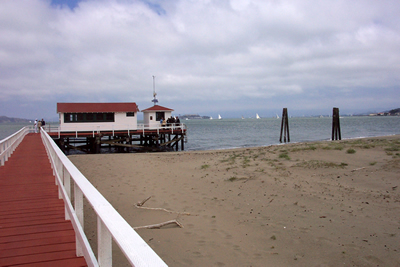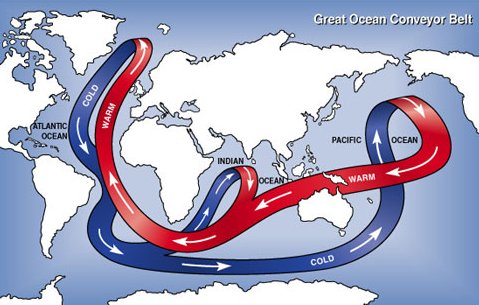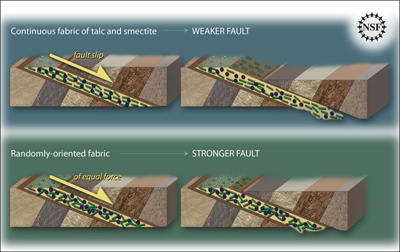Click on image for full size
Image courtesy of NASA
Global Ice Age Climate Patterns Influenced by Bering Strait
News story originally written on January 10, 2010
Sometimes, a small change in the Earth can lead to a big change in climate.
A new study shows that changes in the Bering Strait might have affected ocean currents and climate worldwide thousands of years ago.
The Bering Strait is a narrow waterway between Russia and Alaska that connects the Atlantic and Pacific Oceans. It allows water to flow from the Pacific to the Atlantic.
Scientists used a computer model to study how the Bering Strait affected climate starting about 116,000 years ago when odd cycles of cooling and warming happened over and over.
In the model, as climate cooled because of changes in Earth's orbit, ice sheets grew. This caused sea level to fall, nearly closing the Bering Strait.
Without the fresher waters of the Pacific flowing in, the Atlantic Ocean water grew saltier. The dense, salty water dropped low in the ocean, which allowed a current carrying warm water from the tropics to speed up. The water warmed Greenland and parts of North America enough to, over thousands of years, melt ice sheets and raise sea level, reforming the Bering Strait.
With the Bering Strait, fresher water could once again flow from the Pacific to the Atlantic. The fresher water weakened the current bringing warm water from the topics. Without the warmer water, North America and Greenland became cooler. The ice sheets grew again and sea level dropped. The Bering Strait mostly closed and the entire cycle was repeated.
The pattern was finally broken about 34,000 years ago, when a natural orbital cycle made Earth farther from the Sun during Northern Hemisphere winter, causing more cooling so that the ice sheets continued to grow even when the Bering Strait closed.


